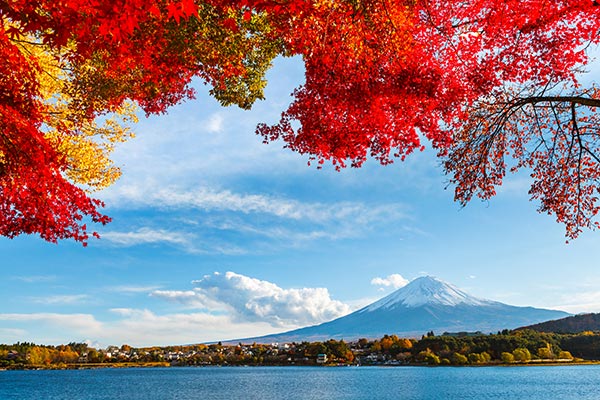
GET THE LATEST CRUISE DEALS

GET THE LATEST CRUISE DEALS



Japan is rich with startling contrasts. Big cities with bright lights and high-tech gadgetry, so close to countryside villages and enclaves of historic cities where centuries-old Japanese culture continues to thrive. The frenetic pace of the one of the world’s most powerful economies, juxtaposed with the quiet reverence for natural beauty and the ancient traditions. With this fascinating mix of old and new (in fact, always the newest and the latest, if the Japanese can have their way), a visit to Japan will always be surprising and ever so stimulating.$cruiseEngineId=1
Beppu was founded on April 1, 1924, and is famous for its onsen (hot springs), which are regarded as sacred. Beppu is Japan's onsen capital. It has the second largest volume of hot water in the world after Yellowstone in the United States and has the largest number of hot spring sources in Japan.
Beppu contains nine major geothermal hot spots, which are sometimes referred to as the "nine hells of Beppu". Beppu is also divided into eight major hot spring areas, listed below and known as Beppu Hatto.
Fukuoka (Foo-koo-oh-ka), one of the world’s most livable cities according to The Economist, is praised for its green spaces in a metropolitan setting. It’s a cosmopolitan centre with all the shopping, dining, sports and culture you can imagine.
Attractions
Located in the southwest of Hokkaido and facing the Tsugaru Strait, Hakodate was developed as a port town for trade with foreign countries at the end of the 19th century. Hakodate seaport was originally founded as "Tomoe seaport" because of the comma (tomoe) shape of the area and was later renamed Hakodate seaport. Today, the city showcases an interesting blend of Japanese and Western architecture and many more delightful opportunities to explore its influence as a flourishing port.
Kagoshima (still often referred to by its old name, Satsuma) is the capital city of Kagoshima Prefecture. A city of palm trees, wide avenues and warm, mild-tempered weather, surrounded by beautiful mountain backdrops and dozens of local hot springs, Kagoshima’s symbol and dominant landmark is Sakurajima, one of Japan's most active volcanoes.
Attractions
Hugged by a beautiful bay and misty mountains, this busy harbour town is teeming with multicultural charm and one-of-a-kind urban experiences.
Attractions
Miyazaki Prefecture is a prefecture of Japan located on the island of Ky?sh?. The capital is the city of Miyazaki.
Historically rich Nagasaki features beautiful seaside scenery and fabulous nighttime views from its mountain slopes. Secluded hot springs, fascinating museums, and ornate temples are part of this city’s fascinating mix. Ten natural parks grace the area, and unique festivals are celebrated throughout the year.
Attractions
Nagoya's history goes back 400 years, starting with the construction of Nagoya Castle around which the city developed. Halfway between east and west, Nagoya is one of Japan’s major transport hubs, and one of its most important manufacturing and industrial cities. Nagoya also has a thriving cultural scene, with its wealth of museums, a vibrant nightlife. Intent on becoming Japan's eco-capital of the future, Nagoya also has much to offer the nature lover.
Attractions
Naha, the capital and largest city of Okinawa Prefecture, boasts a unique Japanese culture. Because Naha is the region's transportation hub, the locals have grown accustomed to openly sharing their distinctive customs with visitors from all over the world.
Attractions
Osaka is a city in the Kansai region of Japan's main island of Honsh?, the designated city under the Local Autonomy Law, the capital city of Osaka Prefecture and also the biggest part of Keihanshi Area, which is represented by three major cities of Japan, Kyoto, Osaka and Kobe. Located at the mouth of the Yodo River on Osaka Bay, Osaka is the third largest city by population after Tokyo and Yokohama.
Due to its proximity to the steep slopes of Mt. Tengu-yama and its location on the western part of Hokkaido facing Ishikari Bay, the nostalgic town of Otaru has gained many nicknames throughout the years including "the sea entrance of Hokkaido" and "the town of hills." The town's handsome, heritage-listed Meiji-era buildings, cobblestone streets lit with oil lamps and restored canal help create an old-fashioned mood, perfect for sightseeing, day or night.
Though one the largest, most frenetic cities in the world, Tokyo still has a lot of efficiency and charm. A study in delightful contrasts, this frenzy-filled metropolis also has tranquil bonsai tree-lined neighborhoods and some of the world's most impressive architecture. Just outside the city is a whole different world, where wooden residential homes, ancient temples, shrines and imperial gardens bear testimony to Japan's rich culture and traditions.
Attractions